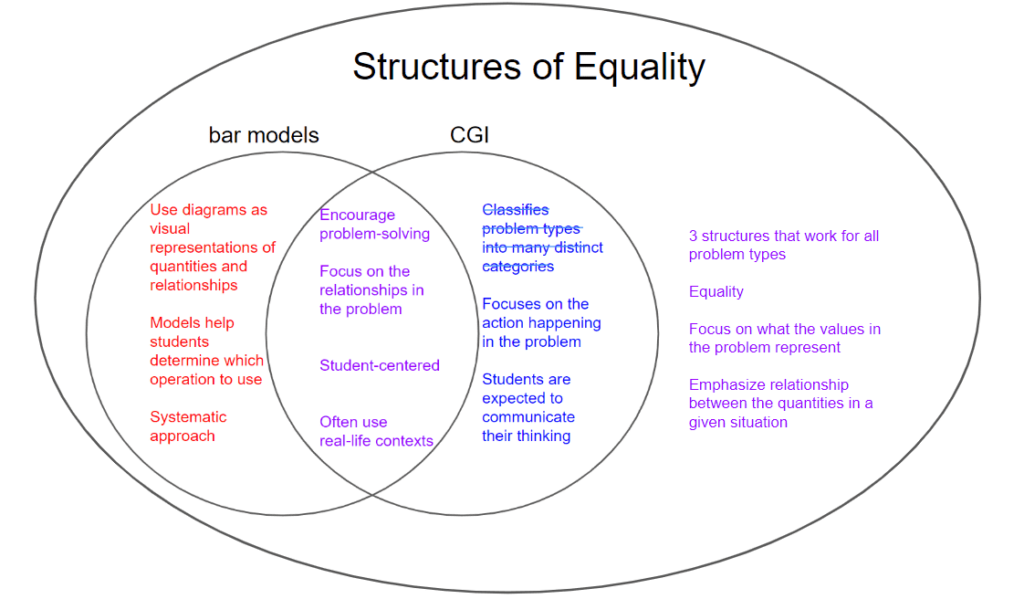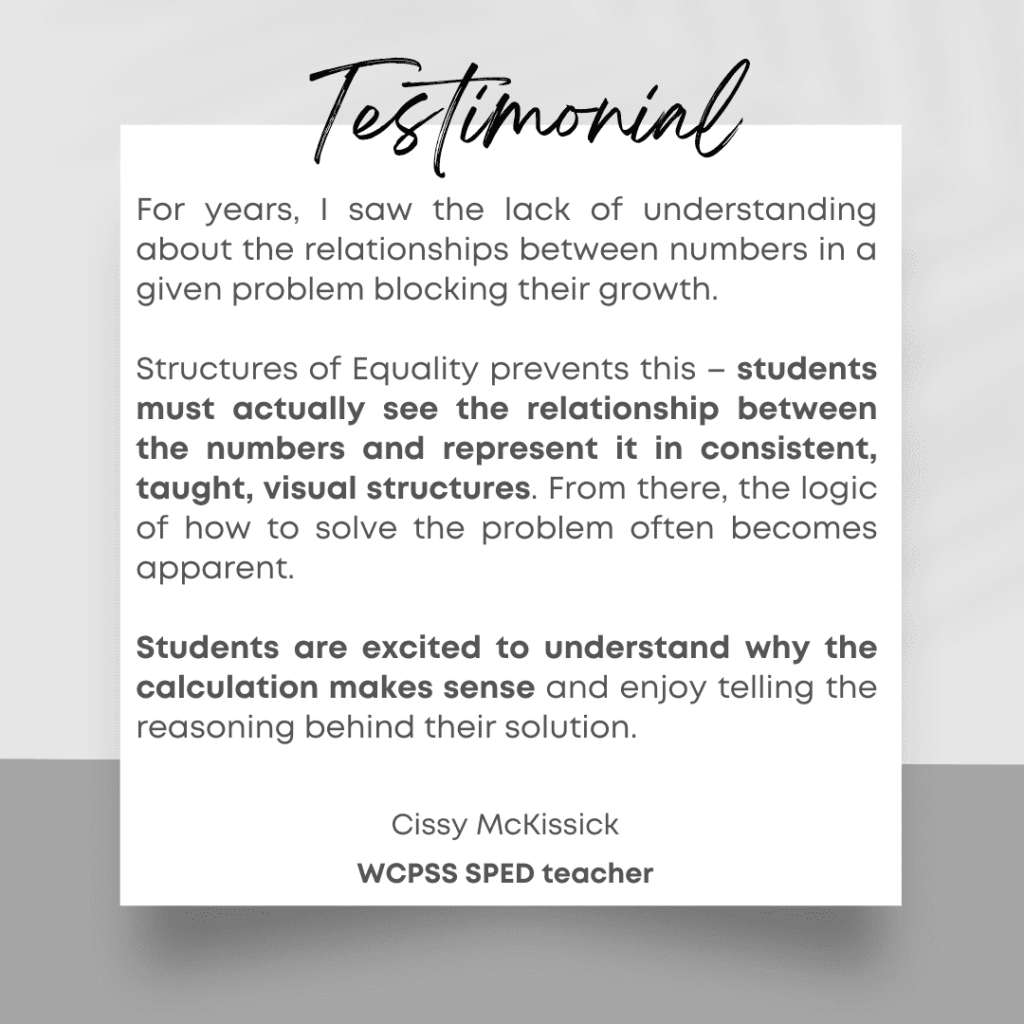August 30, 2023
Updated 6.18.2025
This week, I’m thrilled to deliver on a big promise I made to you in my previous blog, a systematic approach to help students comprehend story problems in math called Structures of Equality (SoE).
Last week, I explored four common approaches to solving story problems and assessed their strengths and limitations. Even though numberless word problems and bar models had a myriad of advantages, they all fell short of the ultimate goal – for students to deeply understand word problems.
By the end of this post, you’ll understand the inspiration and the why behind the framework I developed. And you’ll be on your way to helping students solve story problems with success.
A bit about my journey
Like you, I was frustrated there was no comprehensive solution to address the struggle with reading comprehension when teaching math word problems. When I became a math coach, my teachers expressed the same sentiment. No matter what they tried, there wasn’t a structure to effectively teach all students how to tackle word problems.
Bar models, numberless word problems, and CGI worked for many students – but not for everyone.
It became my mission to figure out a solution. A way that all kids could access story problems, internalize them, and have a strategy to conceptualize and make sense of them.
The research
It all started with bar models. When I began consistently using these to help students problem solve, I saw an increase in their overall understanding of problems. They were able to make visual representations of quantities and began to critically think about what was happening in the math stories.
But there was one huge limitation. I noticed it was possible for a student to draw a bar diagram and still not completely understand the relationships in a story.
So I started to do some research and came across George Polya’s book, How to Solve It. (Polya, George. How to Solve It. 2nd ed., Princeton University Press, 2004) I was shocked when I noticed the first edition of this book was written in 1945. For 80 years, educators have been struggling with how to help students approach word problems. Everything he mentioned is still relevant today.
He identified 4 key phases for problem solving.
“First, we have to understand the problem; we have to see clearly what is required. Second, we have to see how the various items are connected, how the unknown is linked to the data, in order to obtain the idea of the solution, to make a plan. Third, we carry out our plan. Fourth, we look back at the completed solution, we review and discuss it.”
Notice he referred to them as phases, not steps. The difference between the two is important to note. One implies a procedure and the other is more flexible.
How Structures of Equality came to be
In addition to using bar models, I was also exploring Cognitively Guided Instruction (CGI). I knew that if I could find a way to merge the two, I could come up with a structure to deepen comprehension. A representation that would be impossible to draw unless students understood the relationships occurring in the story.
The result? I came up with 3 Structures of Equality (SoE) that could be used to represent any problem type in the elementary Common Core Standards. Simple structures with key features that allowed all students to access and successfully work through word problems.

When explicitly taught and consistently used, over time students could internalize the process and independently apply it to solve problems. In a couple of weeks, I’ll share some data with you around student growth and proficiency measures.
What are teachers saying?

So what exactly are the 3 Structures of Equality (SoE)?
In my next blog, I’ll share the Structures of Equality, an overview of how they work, and example problems. Here’s a little sneak peek.

Conclusion
Fueled by frustration and on a mission to find a better way, I began a journey that led to the creation of Structures of Equality (SoE), a reading comprehension tool that can be applied to solve any problem type in the elementary standards. If you’re searching for ways to foster reasoning and problem-solving skills, SoE may be your answer.